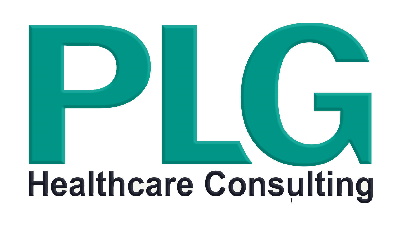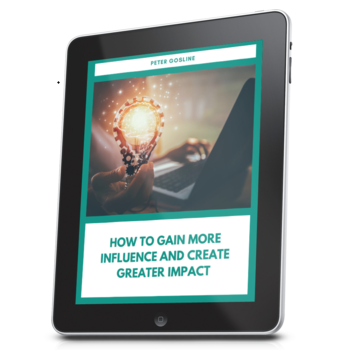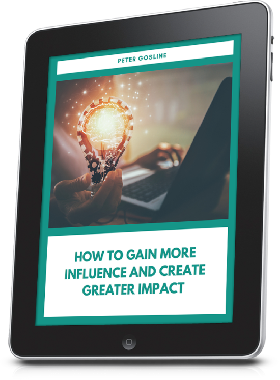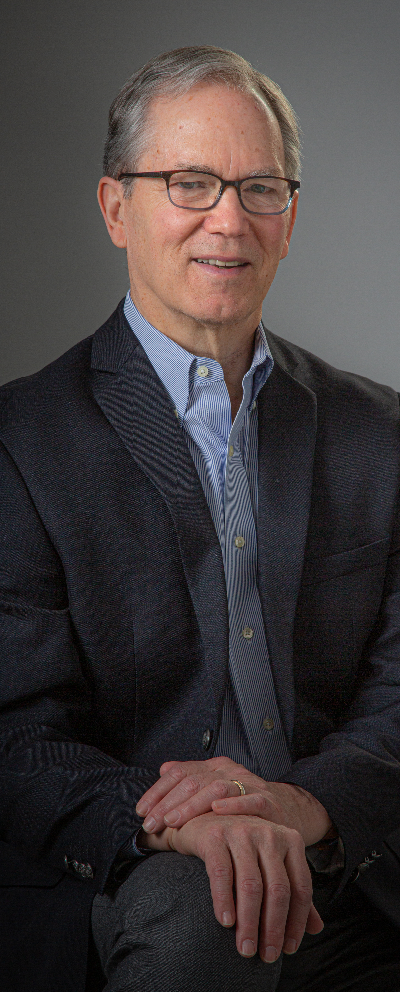This article reveals important insights for advancing health equity, especially in organizations faced with competing priorities, where internal tensions and polarized views slow progress along these lines. By embracing creative tensions and steering clear of an “either-or” mentality, one can navigate these issues effectively and get positive results.”
While many examinations of racial equity in health outcomes in the US focus on the need to measure disparities and develop strategies to address them, few seem to examine the underlying human dynamics that block meaningful progress on the issue itself. While there may be a mix of factors that explain chronic inaction, such as power arrangements, institutional inertia, and racial bias, we believe that another powerful force is also in play: false either-or choices that lead to immobility, unproductive back and forth, and meaningless polarization.
For more than 50 years, the Robert Wood Johnson Foundation (RWJF) has supported a number of programs to help health-sector leaders enhance their capacities to lead change in their field and beyond to improve health outcomes in the US. As the organization more recently adopted a focus on tackling racial health disparities, they knew that they had to reorient their leadership programs to better fit the complexity of this challenge.
Over the past year, several of us supported the co-design of a next-generation leadership program at RWJF that would help leaders effectively take on such a chronic, complex challenge. As we consulted with more than 230 health system professionals, patient advocates, and patients, we asked them to share their insights into the drivers and barriers to achieving true health equity in our country. They identified a range of specific issues that we need to address, such as eliminating racial bias in research and diagnostics and integrating anti-racism into medical and health professional education.
Across all these conversations we were struck, however, by one recurring theme: In addition to the specific areas in which people noted we needed more effective leadership, they also talked about the “stuckness” and polarization they’ve experienced when trying to make progress on these challenges. Whether it showed up as resistance when engaging others or conflict around strategy among otherwise like-minded advocates for change, we noticed a recurring and problematic set of tensions playing out in unhelpful ways.
Yet, some leaders had a very different frame and experience around these tensions. They viewed them as positive dynamics, even sources of creativity, deeper collaboration, and more meaningful engagement—a way to bring more people to the table on tough challenges. In a sense, these leaders seem to transcend the idea that these are even paradoxes or tensions at all, but simply an integral view of what we have to do.
The idea of creative tensions is not new, of course. While they’ve gone by many names—polarities, dilemmas, paradoxes, opposite strengths, competing values, contradictions, dynamic tensions, or “unsolvable problems,” they were documented as early as 3,000 years ago, starting with the I Ching and early Yin-Yang philosophy. Dr. Martin Luther King talked about many of these tensions in his writings. In his last presidential address to the Southern Christian Leadership Conference in August 1967, for example, he reflected on a particularly powerful tension in the movement for justice:
“One of the great problems of history is that the concepts of love and power have usually been contrasted as opposites, polar opposites—so that love is identified with a resignation of power, and power with a denial of love….
Now we’ve got to get this thing right. What is needed is a realization that power without love is reckless and abusive, and love without power is sentimental and anemic. Power at its best is love implementing the demands of justice, and justice at its best is love correcting everything that stands against love.”
Five Key Creative Tensions For Health Equity
Overall, we identified 14 distinct tensions from across the 230 interviews, all related to the challenge of advancing health equity. Many of these tensions—such as focusing on individual change or institutional change—were common to a range of different societal challenges while others were more specific to the challenge of structural racism.
In the end, we saw five tensions that seemed most critical to leverage effectively as we work to advance health equity. We explore those here and then look at two cases in which those working for health equity have used a both-and frame—revealing truth in both of two seeming alternatives—to powerfully leverage change toward health equity.
Advancing Targeted Solutions For Those Most Harmed And Pursuing Better Outcomes For All
A number of leaders we spoke with highlighted a common belief, including in some of their own health systems, that efforts to improve health outcomes for Black and Indigenous people and people of color would take resources, time, and attention away from delivering quality care for all patients. We have also seen broader pushback against the idea that any policy or practice that seems to favor any group, no matter how harmed or marginalized, is unfair.
Others noted, however, that many policies and programs designed to improve health outcomes for patients of color can also benefit all patients, much like the oft-cited example of curb cuts. When municipalities began eliminating curbs at street corners to help people with disabilities move between sidewalks and crosswalks, they found that the change benefitted many types of citizens—people using strollers, skateboarders, people who have trouble with their legs, or people using carts to carry groceries home.
One way to leverage this tension for health equity is through Targeted Universalism. Introduced by Berkeley Professor john a. powell of the Othering and Belonging Institute, this approach integrates the needs of the few with the interests of the many by setting universal goals and developing strategies to achieve those goals through targeted approaches. By implementing strategies that are specific to each group that’s experiencing harm based on their particular needs, we are better able to both close gaps and improve outcomes for all.
Changing Hearts And Informing Minds
Several leaders we spoke with argued that data and analysis that reveal disparities, especially as part of larger quality improvement efforts, can drive more equitable policies and practices without having to change people’s hearts and minds. At the same time, others cited situations in which physicians and health leaders, even when confronted with clear analysis on race-based outcomes with controls for other factors, refused to acknowledge the role of race in producing those disparities, or simply failed to put policies in place to effect the needed change. This has led some leaders to argue that we need other “non-rational” strategies—such as human-interest stories, first-person narratives from those most harmed, empathy interviews from human-centered design—to change hearts, not just minds.
Again, we see not just the need for a both-and view but a nuanced strategy to address the elements of the tension itself. In this case, we can choose a strategy that best fits the situation—at times appealing to the heart and at times to the mind. As Berkeley researcher Meredith Minkler noted, “Institutions are moved by numbers and people are moved by stories.”
Holding Individuals Accountable And Changing Structures And Systems
“Clinicians are very good at saying that they’re not racist or that they don’t have bias and that they treat all their patients the same,” one health care leader noted. Many of those we interviewed shared both research and personal examples of racial bias playing out across the health system, such as race-based corrections in medical diagnostics or doctors’ documented tendency to systematically undertreat Black patients’ pain. Others argued that efforts to address individual bias alone will fail to drive structural change because institutional cultures, structures, standards, and policies have been shaped by the concept of race and the reality of structural racialization (a term we prefer to the more common “structural racism” for reasons described here by powell).
What seems most true is that focusing only on holding individuals accountable for their biases and behaviors neglects the very real structural drivers of inequity, such as medical payment models that prevent some people of color from accessing needed treatments. At the same time, focusing only on structures and systems without holding individuals accountable neglects the fact that individual behaviors have to change for systems to achieve equity.
Advancing Deep Understanding Of Racial Inequity And Providing Entry Points For Potential Partners
This is one tension in which we found people in very different places, all for good reasons. This represented an insight shared by Barry Johnson, PhD, at Polarity Partnerships that no matter where a person sits in a polarity tension, their view will be true, but not the whole truth.
The analysis of structural racism shared by the diverse stakeholders we spoke with was striking in its depth and complexity. Many leaders talked about larger cultural forces of individualism, a hierarchy of human value, and the concept of “deservedness” as key drivers of inequity—all of which are critical to understand and address if we are to truly achieve the goal of a racially equitable health system. For some organizations and health systems, going deep into these issues has had a transformational effect on their commitment to health equity.
Others noted, however, that they operated in quite different contexts and were instead advancing meaningful work in inequities by focusing on accessible, localized analyses of how their individual health system was impacting disparities. In their contexts, they found that overly deep or complex analysis actually overwhelmed their leaders and turned potential allies into challengers.
Again, context mattered. The most successful efforts seemed to strategically leverage both approaches, adapting the focus based on the timing and situation.
Leveraging Formal Power And Informal Influence
Let’s say we have a seemingly solid approach with the potential to change hearts and minds to move into deep understanding of racial inequity through accessible entry points. We’re then faced with another tension: Do we focus more on engaging positional leaders across the health system or on organizing support and resources around those “informal” leaders who are working outside traditional power structures to change the system?
Given the hierarchical nature of many organizations in the health field and especially health care, we heard a heavy emphasis on the need to engage leaders with formal, positional power, with some reporting real success. Yet, a number of stakeholders also shared compelling examples about successful change coming about through organizing people outside formal positions of power.
In one example, medical students at the University of Washington organized to question the use of race-based corrections in diagnostics that determined eligibility for kidney transplants, a correction that systemically discounted eligibility for Black patients. By drawing on the informal power of networks and engaging the formal power of aligned faculty members, the students initiated a change that has since reverberated across the medical establishment.
The Underlying Bias: Either-Or Thinking
One of the striking characteristics of each of these tensions is that, contrary to treating these tensions as either-or choices, we can’t choose between them if we’re going to succeed. In many cases, in fact, the root of failure in our efforts to advance health equity may be our inability to complement either-or thinking with both-and thinking.
Our tendency to make false either-or choices isn’t specific to health care, of course. We see it in the deeply politicized debates between individual liberty and equality; between personal responsibility and community responsibility when dealing with challenges such as employment, homelessness, and addiction; and in the tendency to choose financial priorities over our mission in health care. As both Edwin Nichols, PhD, and educator Tema Okun have noted, either-or mindset is a prevalent characteristic of dominant culture in the US and Western culture more broadly.
Over time, these false choices reinforce an equally false core assumption that, as Johnson puts it, we can’t have “enough for all and abundance for some.” This assumption, compounded by an underlying belief that some lives matter more than others, has led to systematically worse outcomes for people of color across our health system.
Case Studies: Embracing Two Tensions For Health Equity
It’s one thing to talk generally, of course, about these tensions and the need for both-and thinking, but how do we apply this thinking in our work? Here, we explore how two organizations have leveraged these tensions creatively and dynamically for better outcomes.
Kaiser Permanente: Advancing Targeted Solutions For Those Most Harmed And Pursuing Better Outcomes For All
Fifteen years ago, when Kaiser Permanente took on disparities work, the tension between quality improvement and addressing disparities immediately came into focus. “People were asking, ‘Do you want me to do quality improvement, or do you want me to deal with disparities?’” Ron Copeland, MD, a coauthor of this article, notes. “At that time, people didn’t understand you couldn’t do one without the other.”
The way that tension was eliminated was to recognize that pursuing health equity and eliminating racial, ethnic, and any other form of preventable disparities is quality improvement work. The team at Kaiser Permanente did this by developing a new definition of quality improvement to include equitable experiences and outcomes. This meant creating the infrastructure to examine the data through that lens and address measurable, impactful, and preventable gaps as part of quality improvement work. As Copeland sees it, “Restructuring and redefining things is a tool to mitigate that type of tension between old definitions that might be from a discriminatory or inequitable basis, or tied to structural racism, ignorance, or other drivers.” This meant, of course, getting leadership to adopt the new definitions and helping people buy in, understand their roles, and move forward with them.
Health Care Anchor Network: Leveraging Formal Power And Informal Influence
One multistakeholder collaboration has seen a sea change in their work by embracing a both-and view. The Healthcare Anchor Network (HAN) is a collaboration of 75 health systems working to inflect change around economic drivers of health by strategically directing their systems’ hiring, purchasing, and investing power toward inclusive economic development in low-income communities of color.
Since its launch in 2016, the HAN team has actively centered the voices of those outside health care—the informal influencers, including community nonprofit leaders, academics, community organizers, and people experiencing economic inequity—to share their experiences, dreams, and frustrations directly with health care leaders. Nearly every convening of the network has had multiple keynote speakers and panelists representing community voices and interests sharing directly with hundreds of health care leaders. As HAN’s director Dave Zuckerman, who uses the creative tensions approach explicitly in his work, puts it, “Having voices from community partners in the room creates a level of accountability for meaningful action that we just don’t get in other ways.”
While that informal influence is important, the HAN team also created gatherings specific to chief executive, financial, and purchasing officers, respectively, so that formal health system leaders could hear from their peers about their anchor strategies. This ultimately led to a series of commitment programs that, based on approval from health systems’ boards, have resulted in billions of dollars in new commitments to local inclusive investing and purchasing.
Six Practices For Embracing Creative Tensions
To truly embed both-and mindsets alongside our tendency for either-or thinking, we first have to notice them and then reframe false choices into both-and propositions. Here are six strategies that you can start using now:
Ensure Alignment Around a Greater Shared Purpose. A shared purpose makes any tension look relatively small and more manageable. If we lack a shared purpose, we’re much more likely to see polarization and use an either-or approach.
Set a Both-And Context. At the opening of meetings, especially with new groups, we suggest naming the key creative tensions that are likely to show up, then getting agreement to leverage them creatively as the group works together.
Reframe in Real Time. As you listen for these tensions in meetings, you’ll sense the false framing of tensions as either-or choices and can offer a reframing of the choice into a creative tension. For example: “I hear conflict here, but I believe you’re both right. Clearly, we need BOTH strong accountability for performance, and we need strong support for staff.”
Differentiate, then Validate, then Integrate. It’s helpful to recognize the unique value of divergent perspectives before trying to get people on the same both-and page. First, state the benefits of one of the values or perspectives being expressed and then acknowledge that the person certainly has legitimate concerns about the other perspective. Then do the same with the alternative view. Once you’ve fully honored and acknowledged both distinct values, then talk about the need for both in creating an effective both-and approach that integrates the two.
Acknowledge Value. When two people are polarized around a creative tension, that’s a sign that they’re deep into an either-or frame and that one of them has to win. Have each person share one benefit (or upside) of the other person’s perspective, then move to one of the suggestions on this list to help them move forward together.
Do a “Go Around.” You’ve probably been in a meeting where two people have started “pairing off” in a heated debate. What often happens is that, as the argument intensifies, other people start to withdraw. That is often the sign of a creative tension that people are trying to win. One effective way to disrupt the either-or dynamic is to ask those people to be silent for a few minutes as you go around the room to hear everyone else’s input. You’ll usually find that the issue has gotten much more nuanced and “both-and” as more people share, helping to move away from polarization and into a more reflective and creative space.
However, we approach these tensions in our work, we all need to become skilled at working with them, especially as we collaborate with diverse groups to advance health equity. These tensions are real, they’ve been around a long time, and they won’t go away. Rather than treating them as barriers to progress, we can instead treat them as what they are—insight and information to guide a better, more resilient, and more effective approach to lasting change.
Source: Health Affairs





